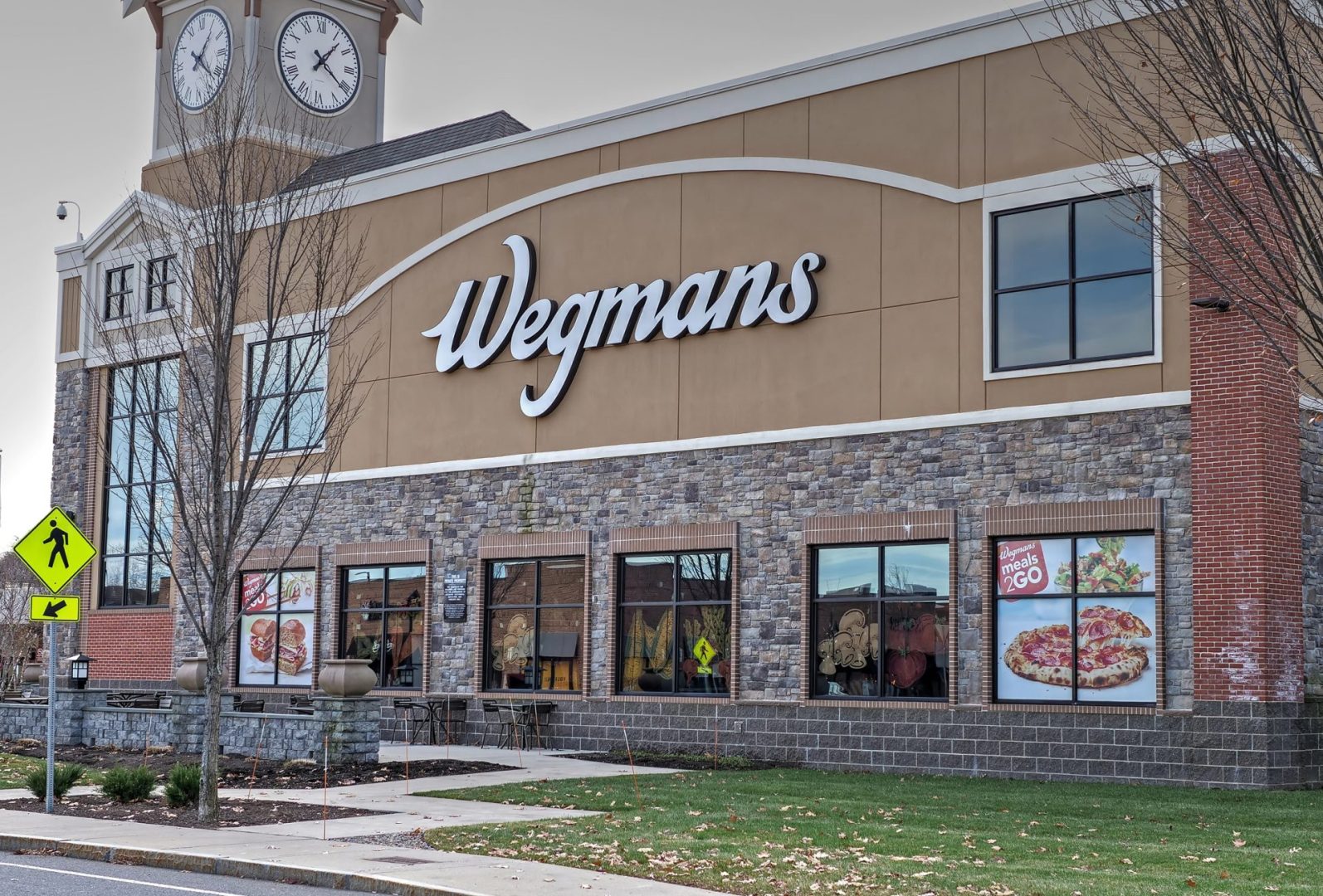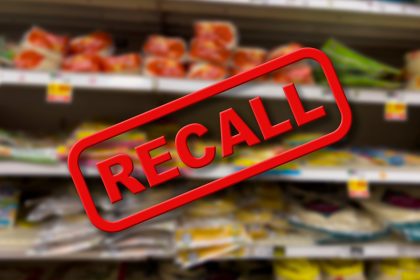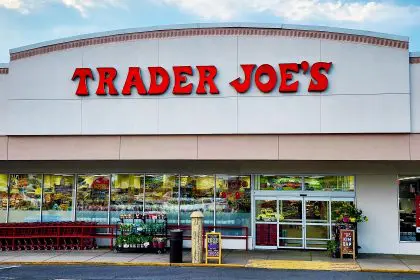Sweet treats that should bring joy to families across the East Coast have instead become a source of serious health concerns. Wegmans Food Markets has issued an urgent recall of its semi-sweet chocolate nonpareils after discovering that the popular candy contains an undeclared milk allergen that could trigger life-threatening allergic reactions.
The recall affects 18.5-ounce tubs of chocolate candy distributed across eight states and Washington D.C., putting countless families at risk who may have unknowingly purchased the contaminated products. What makes this situation particularly dangerous is that the milk allergen was completely absent from the product packaging, leaving consumers with no way to identify the hidden threat.
A hidden danger in family favorites
The recalled chocolate nonpareils were distributed to Wegmans locations across Delaware, Maryland, Massachusetts, North Carolina, New Jersey, New York, Pennsylvania, Virginia, and Washington D.C. These small chocolate treats, often enjoyed as snacks or used in baking, have become a ticking time bomb for anyone with milk allergies or lactose sensitivity.
The Food and Drug Administration issued an allergy alert on Monday, emphasizing that consuming these products could pose a risk of serious or life-threatening allergic reactions for people allergic to milk or sensitive to it. The severity of this warning cannot be overstated – for individuals with severe milk allergies, even trace amounts can trigger anaphylaxis, a potentially fatal reaction.
Mellace Family Brands California, Inc., the company responsible for manufacturing the recalled products, attributed the dangerous oversight to a temporary breakdown in their suppliers’ manufacturing process. This explanation, while technical, does little to comfort families who may have already consumed the contaminated candy.
Identifying the dangerous products
Consumers need to act immediately to identify whether they have purchased any of the recalled chocolate nonpareils. The affected products can be identified by specific lot codes printed on the side of the tubs, making it crucial for families to check their pantries and refrigerators immediately.
The dangerous lot codes are:
- 55021 – Check your tub immediately for this number
- 55031 – Another high-risk lot requiring immediate attention
- 55491 – Poses the same serious allergic reaction threat
- 55501 – Contains the same undeclared milk allergen
- 56061 – Equally dangerous for milk-allergic individuals
- 56071 – The final lot code requiring immediate action
Each lot code corresponds to different best-by dates, but regardless of the expiration date, all products with these codes should be considered dangerous for anyone with milk allergies. The varying dates mean that some families may have already consumed portions of the recalled candy, making symptom monitoring essential.
The severity of milk allergies
Milk ranks among the nine foods that the FDA considers major food allergens, a classification that reflects the serious health risks associated with accidental exposure. For individuals with milk allergies, consuming even small amounts of the protein can trigger reactions ranging from mild discomfort to life-threatening anaphylaxis.
The symptoms of milk allergic reactions can develop rapidly and may include hives, swelling of the face or throat, difficulty breathing, vomiting, diarrhea, and in severe cases, a dangerous drop in blood pressure. Children are particularly vulnerable to severe reactions, making this recall especially concerning for families with young ones who may have enjoyed these chocolate treats.
What makes milk allergies particularly challenging is that the protein can be hidden in unexpected places. Even products that don’t taste milky or creamy can contain milk proteins used in manufacturing processes, which is exactly what happened with these supposedly milk-free chocolate nonpareils.
Legal requirements ignored
Federal law requires companies to clearly label food products that contain any of the nine major allergens: milk, eggs, fish, shellfish, tree nuts, peanuts, wheat, soybeans, and sesame. This legal requirement exists specifically to protect consumers with allergies from accidentally consuming dangerous ingredients.
The failure to properly label these chocolate nonpareils represents a serious violation of food safety regulations designed to protect vulnerable consumers. For families dealing with food allergies, proper labeling isn’t just a convenience – it’s a matter of life and death.
The absence of milk labeling on these products means that consumers who carefully read ingredient lists and allergen warnings had no way to identify the hidden danger. This breakdown in the safety system that families rely on to make informed food choices represents a profound failure of consumer protection.
Taking immediate action
Wegmans has advised customers who purchased the recalled chocolate nonpareils to return them to the customer service desk for a full refund. However, the more pressing concern is ensuring that no one consumes these potentially dangerous products.
Families should immediately check their pantries, refrigerators, and any other locations where they might have stored chocolate candy. If any tubs match the recalled lot codes, they should be removed from the household immediately to prevent accidental consumption.
Parents need to be particularly vigilant about checking any chocolate treats that children might have access to independently. Kids often grab snacks without adult supervision, making it crucial to eliminate any recalled products from areas where children might find them.
The broader implications
This recall highlights the vulnerabilities in food manufacturing and labeling systems that millions of Americans with food allergies depend on for their safety. The fact that a major grocery chain like Wegmans, known for its quality standards, can distribute products with undeclared allergens demonstrates how quickly safety systems can fail.
The incident also underscores the importance of emergency preparedness for individuals with food allergies. Families dealing with severe allergies should ensure they have current epinephrine auto-injectors and that all family members know how to use them in case of accidental exposure.
Manufacturing breakdown consequences
Mellace Family Brands California’s admission that the labeling failure resulted from a temporary breakdown in their suppliers’ manufacturing process raises serious questions about quality control and oversight in food production. Manufacturing processes are supposed to have multiple checkpoints specifically to prevent these kinds of dangerous mistakes.
The company’s explanation suggests that the problem occurred at the supplier level, indicating that the contamination may have happened during ingredient sourcing or preliminary processing. This complexity in the modern food supply chain makes it challenging to maintain consistent safety standards across all production stages.
Current safety status
Fortunately, no illnesses have been reported in connection with the recalled chocolate nonpareils to date. However, this doesn’t diminish the serious nature of the threat, particularly given that some individuals with milk allergies may not immediately connect their symptoms to the chocolate candy they consumed.
The absence of reported illnesses could also reflect the fact that many people with severe milk allergies are extremely cautious about consuming products that might contain hidden allergens. The recall serves as a reminder that even the most careful consumers can be put at risk when labeling failures occur.
Moving forward
As Wegmans continues to expand its presence on the East Coast, with plans to open its first Connecticut location in Norwalk later this month, the company’s handling of this recall will be closely watched by consumers and food safety advocates. The grocery chain’s reputation for quality and customer service will be tested by how effectively it manages this dangerous situation.
The recall serves as a stark reminder that food allergies are a serious public health concern that requires constant vigilance from manufacturers, retailers, and consumers. While the food industry has made significant strides in allergen awareness and labeling, incidents like this demonstrate that there’s still work to be done to protect vulnerable consumers from hidden dangers in their food supply.

















